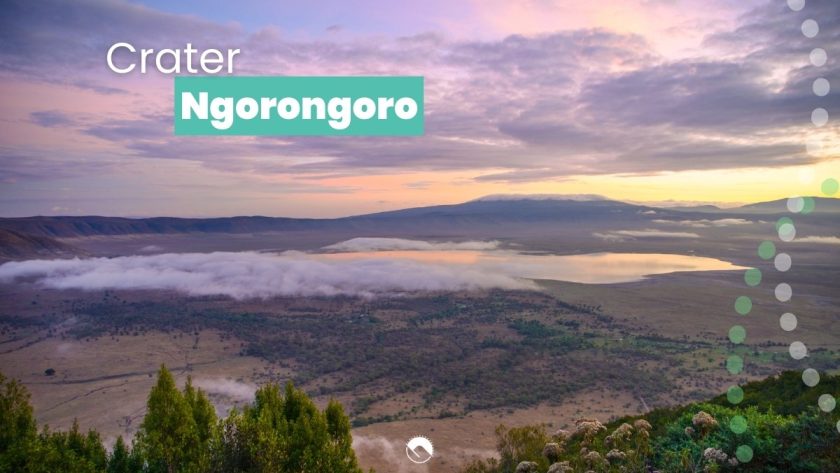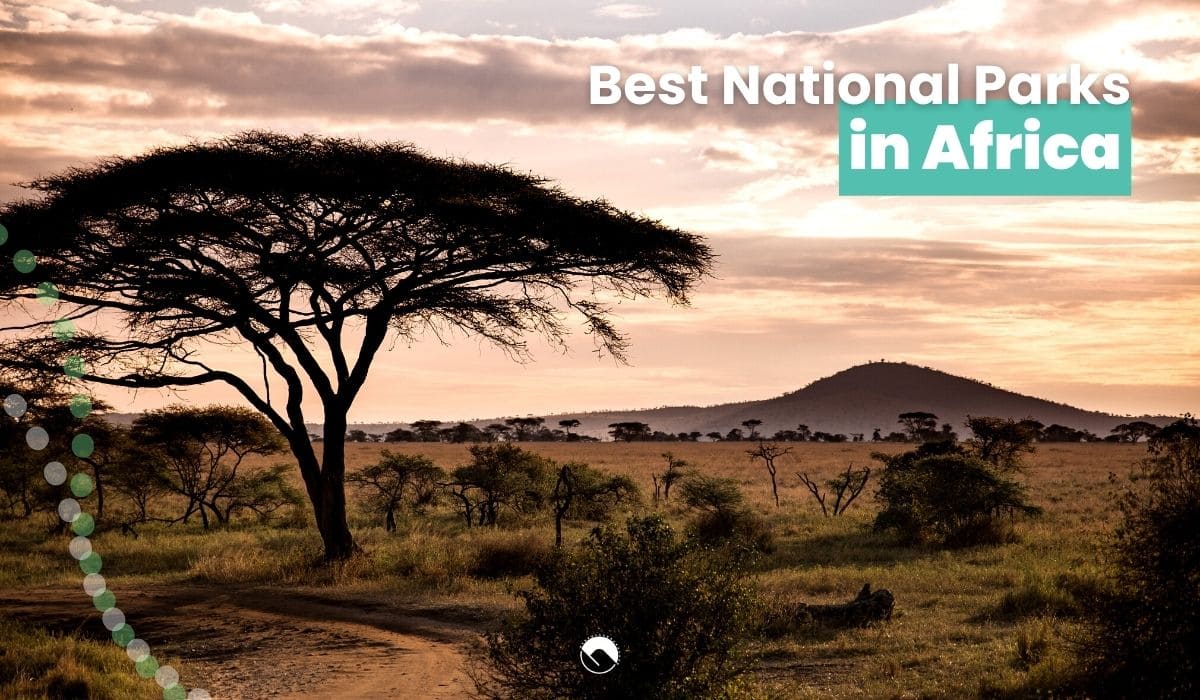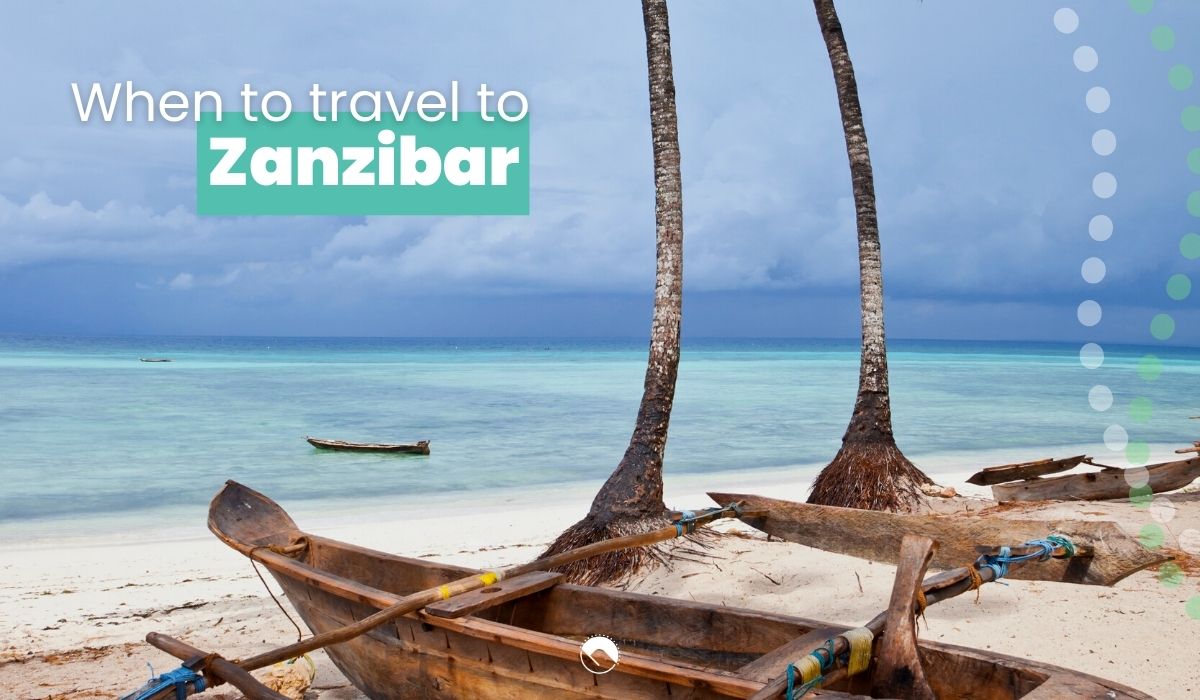This post is also available in:
 Español
Español
Ready for a new trip? Today we take you to the breathtaking Ngorongoro Crater in Tanzania. This place is simply spectacular, with a panoramic view that will take your breath away. This volcanic crater is home to a variety of animals, from elephants to lions and black rhinos. Meet one of the treasures in the heart of Africa.
What is the Ngorongoro Crater?
This geological feature was formed about 2.5 million years ago as a result of a volcanic eruption. It left behind a huge caldera and over the years, this hollow was filled with water, vegetation and animals, becoming a unique and spectacular ecosystem.
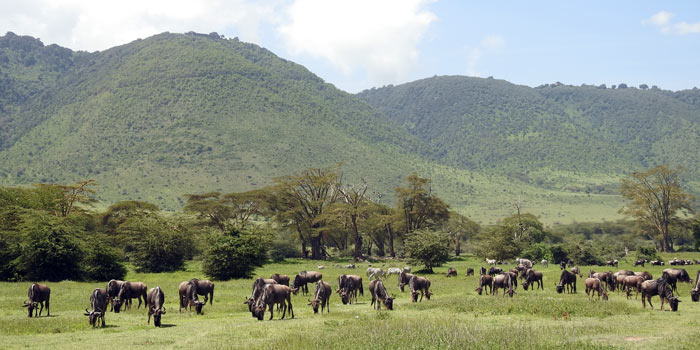
Today, Ngorongoro is a nature conservation area inhabited by thousands of animal species, from lions and elephants to giraffes and flamingos. It is one of the best natural areas of the continent. In addition, it is also a place of great archaeological importance, since fossil remains of hominids that lived millions of years ago have been found in the area.
On the other hand, it is home to the Maasai tribe, a unique community that has managed to maintain their traditions and way of life for centuries.
Why is it a jewel of Tanzania?
As a model of the evolution of living things, the Ngorongoro Crater is one of the most important areas for wildlife conservation in Africa. Its breathtaking natural beauty, combined with the large concentration of animals, makes it a popular tourist destination in Tanzania.
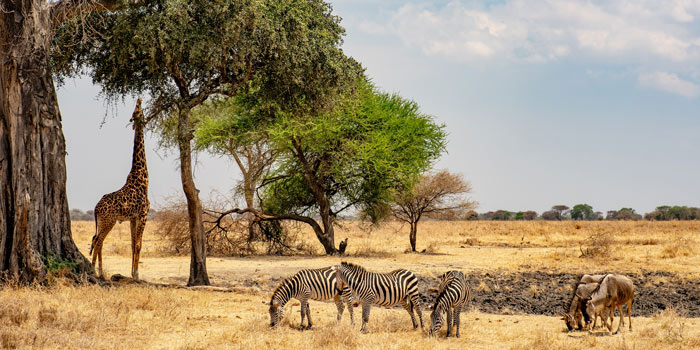
Travelers can enjoy safaris through the Ngorongoro in 4×4 vehicles to observe the animals in their natural habitat. In addition, the Ngorongoro Crater is an important destination for scientists studying the evolution of living things, making it a jewel of Tanzania and the entire African continent.
Characteristics of the Ngorongoro Crater
The Ngorongoro Crater measures 20 km in diameter, has a depth of about 600 meters and an area of about 260 square km. The crater is part of the Ngorongoro Conservation Area and is protected as a UNESCO World Heritage Site. Some of its physical features are:
Steep Walls
The crater walls are very steep and reach a height of up to 400 meters. These walls are the result of volcanic activity that created the crater some two million years ago.
Magadi Lake
At the bottom of the crater is Lake Magadi, a salt lake that is home to numerous species of birds. The lake is rich in minerals such as sodium and magnesium, and is used as a source of salt by the Maasai who live in the area.

Wildlife
The crater is home to a wide variety of wildlife, including elephants, black rhinos, lions, cheetahs, hyenas, buffalo and many more. There is also a large population of herbivores, such as wildebeest, zebra, antelope and giraffe. In other words, by visiting the Ngorongoro Crater you will have the opportunity to see the Big Five of Africa.
Climate
The climate in the Ngorongoro Crater is cool and humid due to its elevation and location in the mountainous region of northern Tanzania. Temperatures usually range from 10°C to 20°C, and rain is common during the rainy season.
In conclusion, the most important thing is that the Ngorongoro Crater is a kind of natural refuge. Which means that the animals living there are protected. If you have the opportunity, do not hesitate to visit it!

